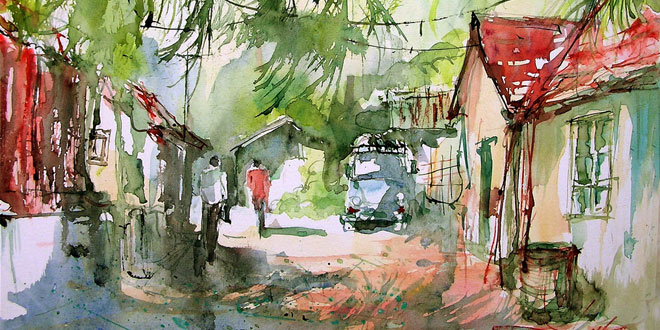Question: By the end of the 18th century, the demand for Indian indigo grew further. What were the reasons behind it?
Answer: This was the time when Britain began industrialize. As a result its cotton production expanded dramatically, creating an enormous new demand for cloth dyes. While the demand for indigo increased, its existing supplies from the West Indies and America collapsed. Between 1783 and 1789 the production of indigo in the world fell by half. Cloth dyers in Britain now began to look for new sources of indigo supply.
Question: How did indigo trade attract foreign traders?
Answer: Indigo trade flourished during the last decades of the 18th century. As a result commercial agents and officials of the Company began investing in indigo production. Over the years many Company officials left their jobs to look after their indigo business. Attracted by the prospect of high profits numerous Scotsmen and Englishmen came to India and became planters. Those who had no money to produce indigo could get loans from the Company and the banks that were coming up at that time.
Question: How was indigo cultivated under the ryoti system?
Answer: Under the ryoti system, the planters forced the ryots (cultivators) to sign a contract or an agreement also known as satta. At times they pressurized the village headmen to-sign the contract on behalf of the ryots. Those who sign the contract got cash advances from the planters at low rates of interest to produce indigo. But the loan committed the ryot to cultivating indigo on at least 25% of the area under his holding. The planter provided the seed and the drill, while the cultivators prepared the soil, sowed the seed and looked after the crop. When the crop was delivered to the planter after the harvest, a new loan was given to the ryot and the cycle started all over again.
Question: Why did the indigo cultivators decide to rebel? How did they show their anger?
Answer: The condition under which the indigo cultivators had to work was intensely oppressive. Finally they decided not to grow indigo. They became united and rebelled. They showed their anger in the following ways:
- They refused to pay rents to the planters, and attacked indigo factories armed with swords and spears, bows and arrows.
- Women turned up to fight with pots, pans and kitchen equipment.
- The Gomasthas, agents of planters, were beaten up, when they came collect rent.
Question: Why was the Indigo Commission set up by the government? What were its findings and suggestions?
Answer: The government set up the Indigo Commission to enquire into the system of indigo production. The Commission held the planters guilty and criticized them for the coercive methods they used with indigo cultivators. It declared that indigo production was not profitable for ryots.
The Commission asked the ryots to fulfil their existing contracts but also told them that they could refuse to grow indigo in future.
 Class Notes NCERT Solutions for CBSE Students
Class Notes NCERT Solutions for CBSE Students


